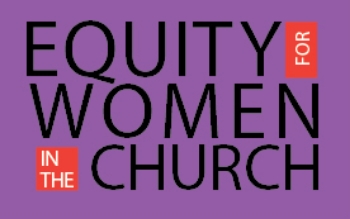Post author Rev. Christine A. Smith has served as Senior Pastor, Covenant Baptist Church, Euclid, Ohio, since 2006. She is the author of Beyond the Stained Glass Ceiling: Equipping and Encouraging Female Pastors (Judson Press, 2013) and creator of Shepastor, a blog for women in ministry. Rev. Smith has been married to Aristide Smith, Jr. for 22 years. Together they have two sons (Aristide III and Caleb) and one daughter (Aris).
More and more congregations across Protestant denominations appear to be accepting women as licensed and ordained ministers. Over the past two years, ABC USA saw the hiring of at least 6 women to serve as executive ministers in regions across America. Recently, the historic Riverside Church in New York called a woman pastor. Increasing numbers of churches have women serving as associate ministers.
Many seminaries have enrollments comprised of approximately 50% women. We are on our way, so it would appear. But not so fast…
While it may seem that the struggle for women clergy is over, data proves otherwise. According to a 2015 Duke University study on the number of women serving as senior/solo pastors, the number still lingers at 11%.
In the article, “How Thick is the Stained Glass Ceiling?,” Heather Hahn writes:
Even as U.S. congregations become more ethnically diverse, a new analysis of Duke University’s National Congregations Study shows that women hold only a small minority of those faith communities’ top leadership positions.
Women serve as senior or solo pastoral leaders of just 11 percent of U.S. congregations — indicating essentially no overall increase from when the study was first done in 1998. These women-led communities contain only about 6 percent of the people who attend the nation’s religious services.
Yes, we have seen advancement in the number of women being called to and placed in senior/solo pastor positions, but the advancement is minimal and at a snail’s pace. The fact that we can name the women indicates their scarcity.
While the image of women serving in the pulpit is a welcomed picture, it can also be a double-edged sword. With the advancement of a precious few women to the role of senior/solo pastor, some are developing a perspective that the struggle is over. With the increase of churches licensing and ordaining women, women serving in the role of associate minister is also on the rise. Congregations who have one, two or more female associate ministers may truly struggle to understand the issue simply because they see women in the pulpit.
The stained glass ceiling, however, remains. Statistics show that 89% of the time, Protestant churches pass over clergywomen and instead select a man for the top ministerial role. In light of these daunting factors, what can advocates for women clergy do to change the current trend? Below are some practical suggestions…
- Retiring male pastors can help prepare their congregations to be open to God’s best… 3-5 years before their retirement, male pastors who are advocates for women clergy can spend time encouraging their congregations to be open to God’s best for them, regardless of gender. Through sound biblical teaching, giving women opportunities to serve in prominent leadership roles, and open, honest dialogue, male pastors can plant seeds of receptivity among otherwise resistant lay people.
- Denominational leaders can work with regional executives and elders to conduct workshops, provide resources (books, articles, guest speakers, etc.), and offer educational experiences to local pastoral search committees… Whether churches have the “call” process or the “appointment” process, providing resources to church leaders that will help them to choose God’s best, regardless of gender, could be very beneficial for all concerned.
- Develop a “Lead Pastor” project for women who feel called to pastor… The United Methodist Church developed a special program designed to pair women clergy called to pastor with women currently serving in the lead pastoral role. The clergywomen shadowed/interned the lead pastor for a period of time. This gave the clergywomen exposure and experience in leading larger congregations—a critical factor in creating opportunities for women who are often passed over due to lack of experience. (Read more about this endeavor here.) Other denominations can develop a similar approach to increase opportunities for women pastors.
The aforementioned suggestions will not answer all of the issues related to the dearth of women pastors. However, such efforts will advance the work to get beyond the stained glass ceiling!

